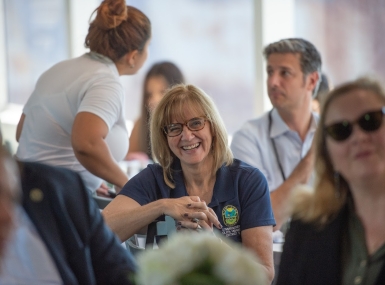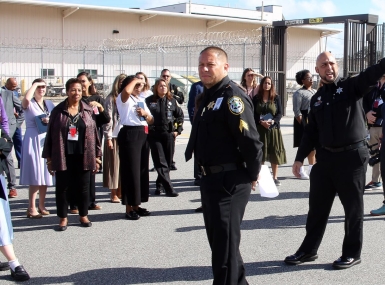Citizens help decide how to spend county tourism tax

Key Takeaways
Orange County, Fla.’s Tourist Development Tax (TDT) reinvests revenue from the area’s attractions back into entertainment, simultaneously drawing in even more visitors and giving back to the community.
The metro Orlando area is the largest tourist destination in North America, and through Florida law, Orange County can tax 6% on hotel stays and short-term rentals. Last year alone, Orange County collected $336.3 million through the tax from the 74 million people who traveled from across the world to experience the county’s entertainment, including Disney, Universal, concerts and sports.
The tax has been around since 1978, but it wasn’t until this year that the Tourist Development Tax Citizen Advisory Task Force was created, allowing Orange County residents to have a say in how the revenue is invested. The task force is made up of people with a wide range of backgrounds, including in government, trade groups and the hospitality industry.
“To try to depoliticize the process of what we would use the money for, for the first time in our 45-year history, I decided that we would open it up to the community,” said Orange County Mayor Jerry Demings. “The various chambers had the opportunity to appoint a representative, each of our county commissioners had the opportunity to appoint a representative … We said that we wanted just average citizens.”
The Orange County Board of County Commissioners approved funding earlier this month for four projects recommended by the task force:
a $560 million expansion of the Orange County Convention Center, which is the third largest in the country and has an estimated economic impact of $2.8 billion;
$90 million for University of Central Florida’s FBC Mortgage Stadium;
$75 million for the Application Review Committee (ARC) and
$69.4 million for arts and cultural affairs.
Community-based organizations can apply for ARC funding, one of which is Preserve Eatonville, a local group serving the oldest incorporated Black township in the country. The organization receives funds through ARC to host the annual Zora Neale Hurston Festival and is set to create a permanent building to honor the town’s history.
Other infrastructure in the county the tax has contributed to includes the Amway Center, where the Orlando Magic (NBA basketball team) play; Camping World Stadium; the Dr. Phillips Performing Art Center and the Orlando Science Center, which is currently being renovated and redeveloped.
The science center received $10 million from the TDT and is using the funding to expand its climate and conservation exhibits centered on ocean, rainforest and swamp environments. The updated center will include sloths, a shark tank and a running track for squirrels, among other new attractions intended to educate and engage Orange County youth.
The tourism tax also gives back to the community in more potentially unexpected ways, according to Demings. The convention center’s hydroponic garden — which grows up to 800 heads of lettuce weekly through a water-based nutrient instead of soil, saving 90-95% of land and water usage — not only provides fresh food for the center’s events, but also provides its surplus food to local organizations like One Heart for Women and Children, which helps provide resources to families living below the poverty line, and Libby’s Legacy Breast Cancer Foundation.
“This is the untold story — as a community chief, as public officials, when you make the decision to invest in these types of facilities, yes, it’s going to create jobs, but also there’s an opportunity to uplift your entire community through the social services that benefit from having these types of facilities,” Demings said. “Because of all of the people who come, all of the events, sometimes what that means is there’s food left behind and we’re able to support nonprofits to deal with food insufficiency issues … sometimes if we have a home and garden show and they leave behind thousands of yards of carpet, we’re able to facilitate the gift of that to nonprofits.”
In fiscal year 2023, 138 pounds of supplies, including clothing and toiletries, and 213,000 pounds of food and beverages were redistributed throughout the community from the convention center. Second Harvest Food Bank of Central Florida redistributes the food to other food pantries, churches and community groups.
Related News

The County Countdown – October 23, 2023
Watch this week's County Countdown for the latest federal advocacy updates on topics related to counties and the intergovernmental partnership.

Not all urban counties have the same housing solution, but they have the same problem
County officials discussed housing affordability at NACo’s Large Urban County Caucus symposium in Orange County, Fla.

Florida county jail addresses mental health crisis
Orange County, Fla.’s Belvin Perry Jr. Central Receiving Center diverts people experiencing a mental health or substance use crisis from incarceration, connecting them to care and resources, while also relieving hospital emergency departments and reducing recidivism and jail costs.
